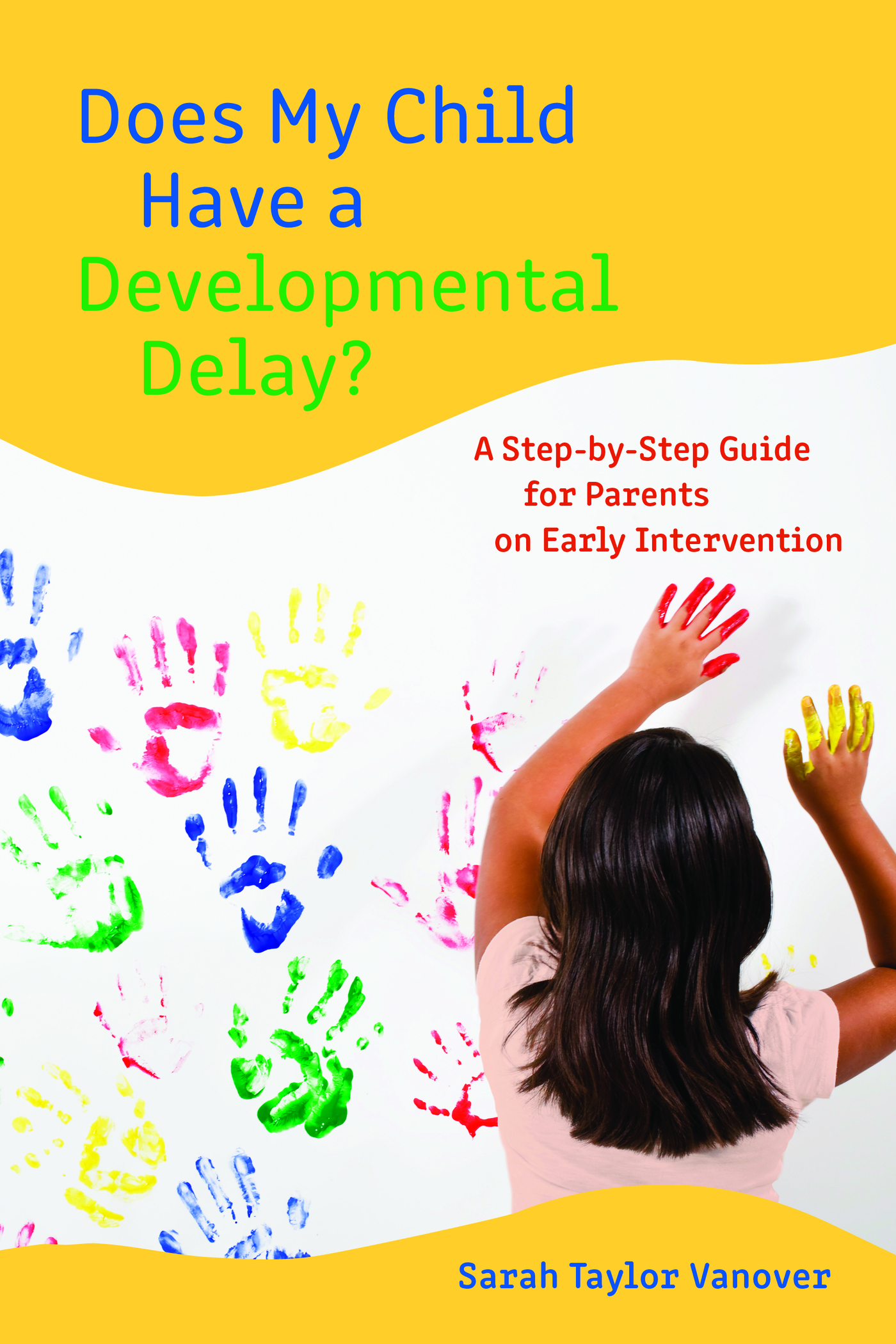Does My Child Have a
Developmental Delay?
Other Books by Sarah Taylor Vanover
Finding Quality Early Childcare: A Step-by-Step Guide for Parents about What
Matters Most (2016)
Sticky Situations: Case Studies for Early Childhood Program Management (2016)
The Beginnings of School Readiness: Foundations of the Infant and Toddler Classroom (2017)
Does My Child Have a
Developmental Delay?
A Step-by-Step Guide for Parents on Early Intervention
Sarah Taylor Vanover
ROWMAN & LITTLEFIELD
Lanham Boulder New York London
Published by Rowman & Littlefield
An imprint of The Rowman & Littlefield Publishing Group, Inc.
4501 Forbes Boulevard, Suite 200, Lanham, Maryland 20706
www.rowman.com
Unit A, Whitacre Mews, 26-34 Stannary Street, London SE11 4AB
Copyright 2019 by Sarah Taylor Vanover
All rights reserved. No part of this book may be reproduced in any form or by any electronic or mechanical means, including information storage and retrieval systems, without written permission from the publisher, except by a reviewer who may quote passages in a review.
British Library Cataloguing in Publication Information Available
Library of Congress Cataloging-in-Publication Data
Names: Vanover, Sarah Taylor, author.
Title: Does my child have a developmental delay? : a step-by-step guide for parents on early intervention / Sarah Vanover.
Description: Lanham, Maryland : Rowman & Littlefield, 2019.
Identifiers: LCCN 2018014481 (print) | LCCN 2018032251 (ebook) | ISBN 9781475842036 (ebook) | ISBN 9781475842029 (cloth : alk. paper)
Subjects: LCSH: Learning disabled childrenEducation (Early childhood) | Slow learning childrenEducation (Early childhood) | Early childhood educationParent participation.
Classification: LCC LC4704 (ebook) | LCC LC4704 .V38 2019 (print) | DDC 371.9/0472dc23
LC record available at https://lccn.loc.gov/2018014481
 TM The paper used in this publication meets the minimum requirements of American National Standard for Information Sciences Permanence of Paper for Printed Library Materials, ANSI/NISO Z39.48-1992.
TM The paper used in this publication meets the minimum requirements of American National Standard for Information Sciences Permanence of Paper for Printed Library Materials, ANSI/NISO Z39.48-1992.
Printed in the United States of America
To my good friend, Jenna, who is an amazing mother!
Foreword
As I share my thoughts, you will see that my perspective is from multiple lenses. As an administrator of a high-quality, inclusive, early care and education center, I spent most of the 1990s working with families as they sought care for their young children, with and without disabilities. The following decade, I was a developmental interventionist, providing support to families with young children with special needs, and currently, as an associate professor of interdisciplinary early childhood education, I teach and support the very students that will become developmental interventionists. But most importantly, I amand will always beMasons mom, a parent who received support from early intervention services.
Mason, a now twenty-two-year-old young man with multiple disabilities, introduced me to the field of early intervention. As my world became one of doctors, specialists, and lots of worry, I had to learn how to navigate through the early intervention system, the host of medical specialists, and the many emotions that were part of this new world. However, there wasnt a book to guide me through the process, acronyms, or emotions that came with my precious son. So, as most families do, I had to learn on the fly, which, by definition, suggests learning quickly, while in the middle of a process or decision, and without proper planning and consideration.
As a professional in the field of early childhood, I am grounded in the research base that tells us we learn by doing as we strive to make sense of our experiences and that with each experience, we learn more and build on what we have learned until we finally master the task at hand.
When considering the overwhelming amount of information, people, and processes that come with early intervention, it can take a great deal of time to accumulate the knowledge necessary for navigation. But as Sophias mom shares in her story, the very nature of early intervention tells us not to waste time! The earlier the intervention, the better the outcomes, and who wants to waste time trying to figure out a system when your childs development is at stake?
As you move through the chapters in this book, you will see they are organized in a manner that resembles the order of the family experience: first noticing the differences in your child when compared to other typically developing children, the assessments and meetings that follow, and then the process of referrals and evaluations that can be so very overwhelming. Next comes understanding your child and all that comes with him or her, and finally shedding light on the feelings and emotions that accompany this experience.
Some of the topics provide information to help navigate the process, giving a sense of confidence and understanding, rather than getting lost in all the professional jargon and a process flow that at times seems too fast, and other times may seem slow. But even more important is understanding that the feelings and emotions experiencedany and all of themare normal. To further this point, following each topic is a family story in which they openly share their experiences, feelings, and emotions. With each story readers can see they are not alonethere really is someone who understands.
The author of this book has experiences in the early intervention arena that she has translated into a family-friendly set of topics that will support individuals as they begin the journey, providing answers to the basics of early intervention. That is not to say that one book will prepare a family for each unique individual childs early intervention experience, but it can indeed prepare a family for an early intervention system, and allow time to plan and prepare.
What is most exciting about this book is that it not only prepares families for the system and process but also demonstrates the value of informal supports, such as families sharing with families. And most important, it provides a framework for allowing, understanding, and working through the emotions that many experience as they cross the threshold of the early intervention system.
I realize that my story and journey resemble those found in this book, and I am so inspired to see families supporting one another by sharing their very personal experiences. It is my hope that you find empowerment and guidance within each chapter. Thank you to the author, Sarah Taylor Vanover, and all the families that shared their stories.
From one parent to another,
Julie Harp Rutland, PhD
Assistant Professor, Early Childhood,
Elementary, and Special Education
Morehead State University
Preface
I have worked in the field of early childhood education for over nineteen years now, and during that time period, I have watched so many families struggle with how to help their children overcome a developmental delay. There are so many emotions attached to this process. Many parents may initially suspect that something is not normal with their childs development, but after that point, they dont know how to help. For years I have been contacted by parents I may have only met one time, but they knew I worked in the field of early childhood special education. They contacted me to ask questions about what to do next because they were so confused.



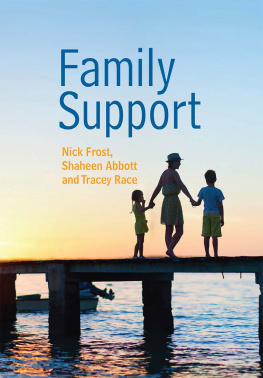


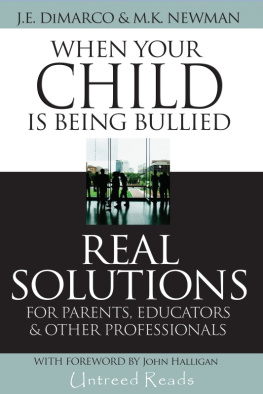
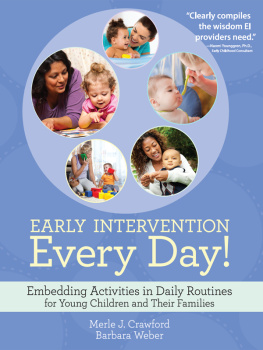
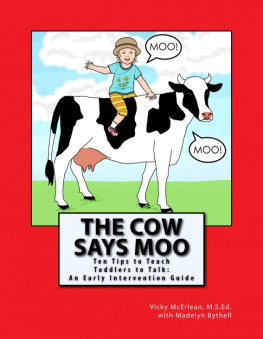

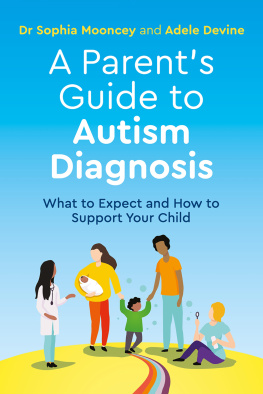
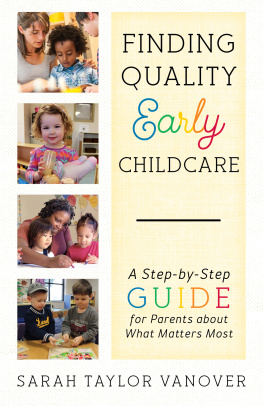
 TM The paper used in this publication meets the minimum requirements of American National Standard for Information Sciences Permanence of Paper for Printed Library Materials, ANSI/NISO Z39.48-1992.
TM The paper used in this publication meets the minimum requirements of American National Standard for Information Sciences Permanence of Paper for Printed Library Materials, ANSI/NISO Z39.48-1992.